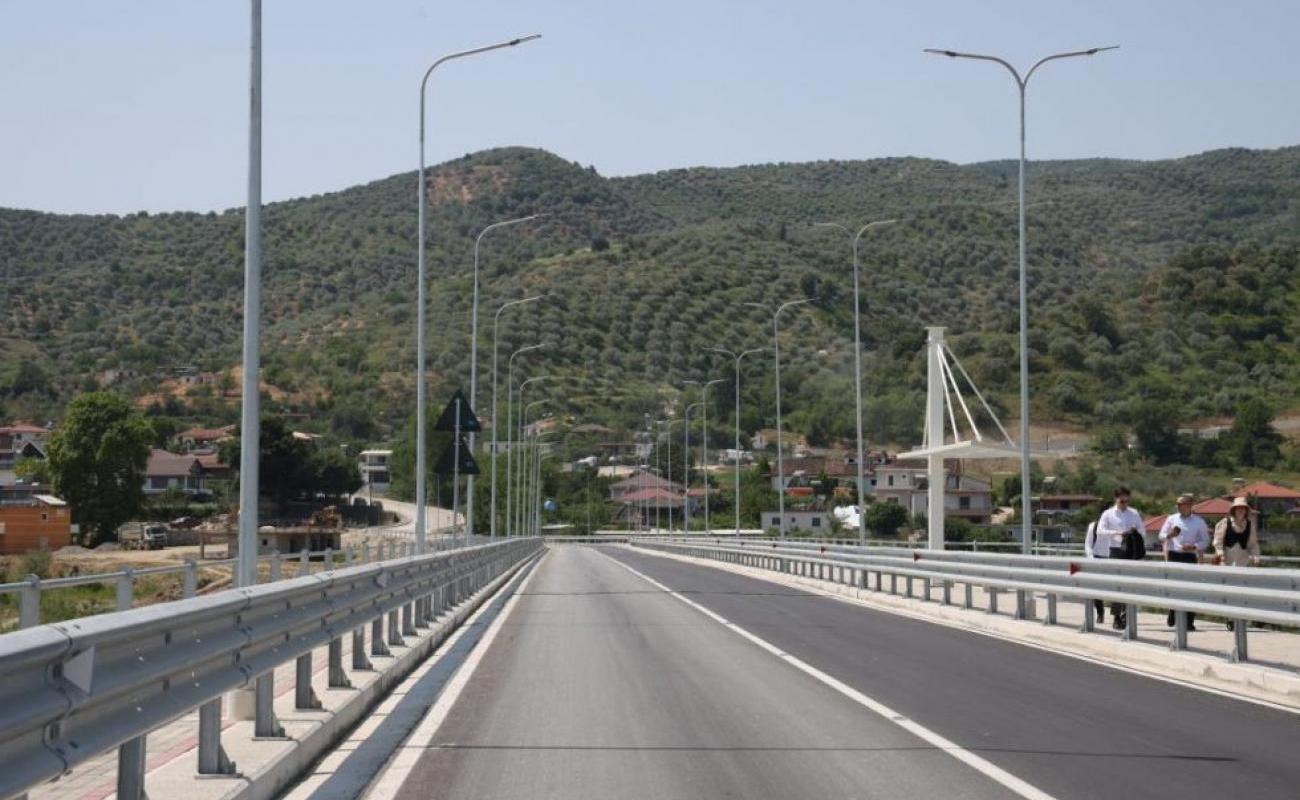A new bridge for a UNESCO World Heritage City: How EU investments are connecting communities and safeguarding Berat’s heritage

A new 290-metre panoramic bridge over the Osum River now connects the villages of Bilçë, Malinat and Zhitom with Berat and its UNESCO-protected heritage site, addressing long-standing challenges and creating new opportunities for both local people and international tourists. While providing faster access to the city for over 2,500 inhabitants in these nearby villages, the bridge has also significantly reduced the number of vehicles passing through the Historical Centre, helping to preserve and protect it.
“Now the villages are closer to Berat, which makes our products and properties more valuable. This bridge was a request and a dream of the residents for 50 years, because previously there was only a narrow and winding road connecting us to the city. For us, it is such a great relief,” says Shkëlqim Hadaj, Head of the Velabisht Administrative Unit, which includes 13 villages.
The new bridge benefits not only Bilçë but also villages such as Drobonik, Bardhaj, Zhitom and Terpan. The investment, an EU-funded initiative through the Tourism-Led Model for Local Economic Development Support Programme, has, according to local residents, doubled the value of the area, encouraging farmers to invest further in agricultural production and creating new opportunities for local businesses, artisans and entrepreneurs.
Considering Berat’s immense potential for both domestic and international tourism, the Bilçë Bridge facilitates access to rural areas, where visitors can enjoy the region’s gentle, hilly landscapes. It also ensures that infrastructure improves the quality of life for those who live in the area as well as those who visit it. The Bilçë area is known for its olive production.
“We wanted a much more comprehensive project in the area of sustainable tourism. In the European Union, the issue of over-tourism is becoming more and more topical. Many cities are struggling with the consequences of their own popularity. It’s the negative side of being so attractive. What we’re doing here is ensuring that the increasing influx of tourists does not come at the expense of the quality of life for Berat’s citizens, while providing a pleasant experience for visitors,” said the EU Ambassador to Albania, Silvio Gonzato, during the inauguration ceremony.
He noted how the bridge now strengthens links between Berat and other parts of the country, including Gjirokastër, Përmet and Saranda, offering tourists a complete experience — to appreciate Albania’s historical heritage, explore its beautiful coastline, and discover the country’s mountain landscapes, such as Mount Tomorr with its religious pilgrimage, now made more accessible.
The new bridge over the Osum River, 12.4 metres wide, with two lanes for vehicles, is part of a broader intervention in natural sites. Due to its position relative to the city of Berat, it offers panoramic views and reduces travel time to Albania’s southern regions to just one hour.
“Now we are much closer to Përmet and Gjirokastër. If before we had to drive through Fier to head south, now we can reach the southern regions, and even Greece, in a shorter time. This will also help tourist agencies bring more tourist buses here,” emphasises Hadaj.
The production of Bilçë’s 554 hectares of olive groves, Malinat’s 160 hectares of vineyards, and the area around Drobonik, known as the “Balcony over Berat”, is now more accessible, fostering new potential and creating opportunities for a sustainable future. Meanwhile, the Gorica district on the other side of the city is reviving its capacities, looking towards the castle and other cultural monuments that distinguish Berat.
